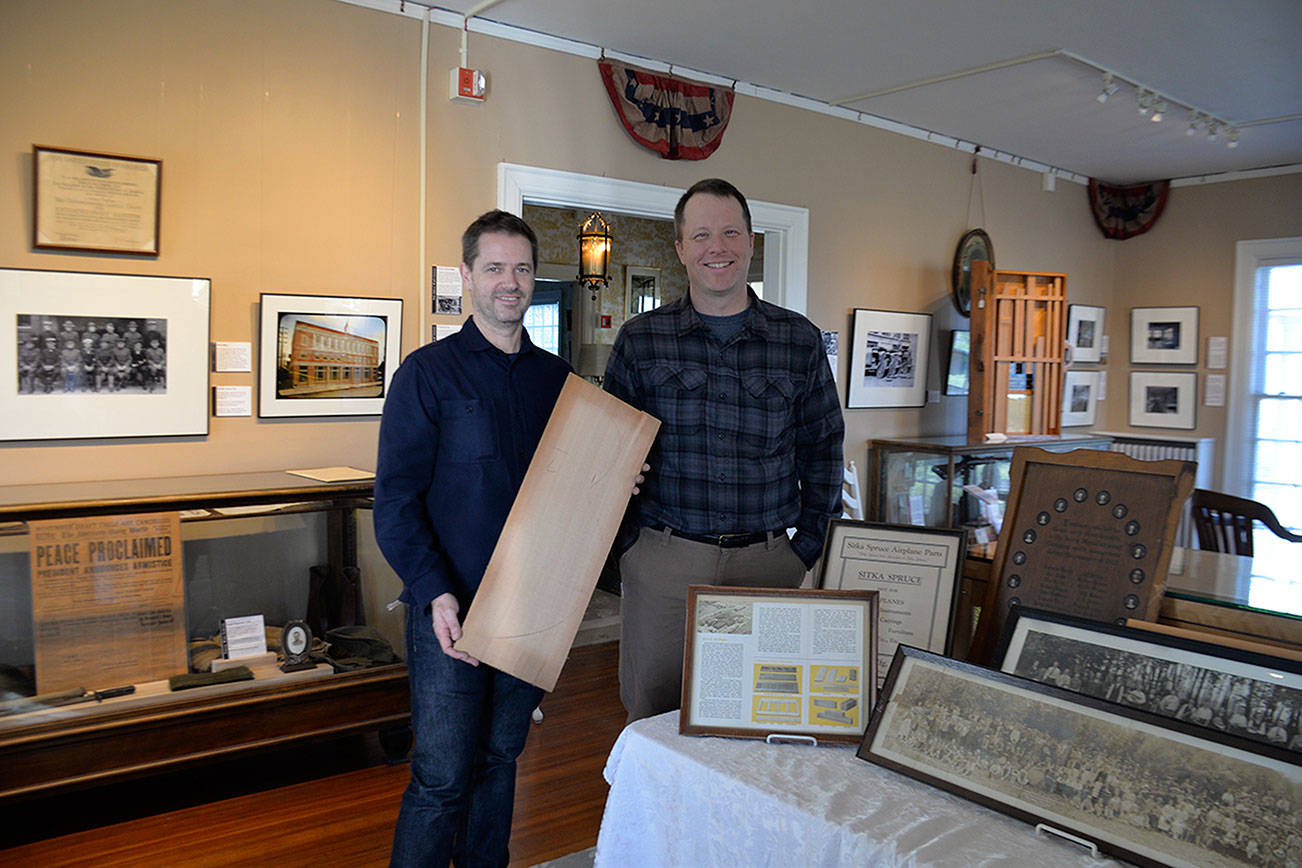Big-name acoustic guitarists in the 1960s were likely using instruments with wood sourced from Hoquiam’s Posey Manufacturing Co., an Australian professor recently discovered.
Professor Chris Gibson from the University of Wollongong visited the Polson Museum in Hoquiam on Saturday, as part of research for his book about the origin of wood used in guitars. He found out a year ago that all the major names like Gibson and Martin guitars were getting the Sitka spruce wood for guitar tops from Hoquiam.
“It’s almost certain that Posey guitar soundboards were in guitars used by Bob Dylan, Elvis, the absolute cream of the crop of musicians,” Gibson said Saturday in the museum with around a dozen former Posey workers in attendance. “It’s a part of the history of the guitar that has never been told, that no one ever figured out.”
After Gibson inquired with Polson Museum Director John Larson about a visit to Hoquiam to learn about Posey, Larson arranged for Posey employees to visit the museum, where Gibson was able to talk with them and learn more for his book.
Posey was producing 500,000 guitar tops annually for guitar companies at its height in the 1960s, according to former Posey Manager Frank Johnson.
Because the supply of spruce trees in the Adirondack Mountains was running out in the 1930s, guitar companies looked to the West Coast for spruce, and Posey was the first major distributor of thin Sitka spruce boards that were glued together and sent to guitar companies to be cut into the shape for the front face of acoustic guitars, according to Gibson. The Sitka spruce was ideal for guitar soundboards due to how sturdy it was and how well it reverberated for a good tone, and because of its size, since a guitar top needed to be the width of half of the tree’s diameter.
There were other companies selling spruce in the Pacific Northwest later on, but Gibson said Posey was the earliest and most important distributor between the 1930s and 60s. Gibson’s book will have an entire chapter dedicated to spruce trees used for guitars, which is where Posey’s section will be.
John Larson, director of the Polson Museum, said he was unaware of Posey selling guitar top boards until Gibson contacted him about the trip to Hoquiam this year.
“Posey was truly a sleeper industry here,” said Larson. “They quietly went along, No one paid attention to them, yet they were doing this worldwide distribution of a very specialized product, that was very precise.”
The Posey Manufacturing Co. has a long list of impressive products it made in the 1900s, from wooden spars used in the plane Charles Lindbergh flew for the first solo nonstop flight across the Atlantic Ocean, to piano soundboards for major piano companies such as Yamaha and Kimball, and other things like backgammon boards and bowls.
The piano soundboards were one of the primary products for Posey, and former workers said they recall Steinway Pianos sending its soundboards to them for repairs on occasion.
While reminiscing about Posey in the museum, one worker recalled making the piano and guitar soundboards and realizing they might be going to well-known musicians like Paul McCartney.
“We’d think about that sometimes, because when you’re making this many products, you know they’re going to some rich person somewhere,” one worker commented.
Saturday’s meeting of Posey employees was also a reunion of sorts for the first time in about 10 years, and Gibson took time to hear from each of them.
Posey went out of business in 1997, but it was still producing guitar tops at the time it closed.
Gibson said his next stop would be in Brazil to learn about rosewood that’s also used in some guitars, and Seville in Spain to learn about classical guitars. He’s in the homestretch of getting the book completed after five years working on it with a colleague. The title of the book is “Enchanted Wood: Guitar Journeys from Musician to Tree.”
After the get-together, Gibson thanked the Posey employees by giving out some chocolate koala bears.



